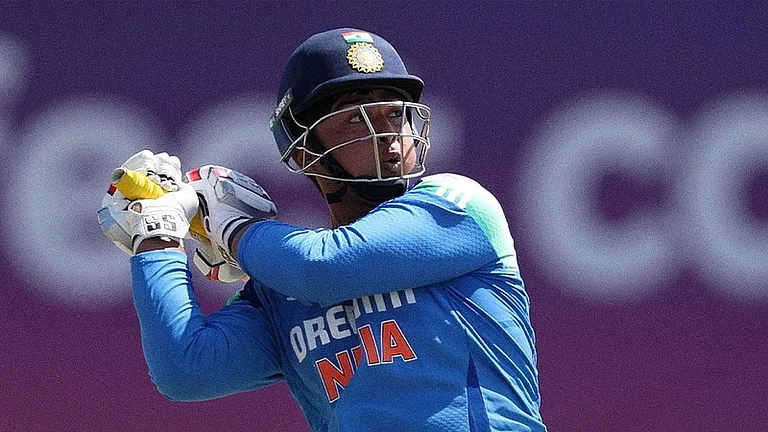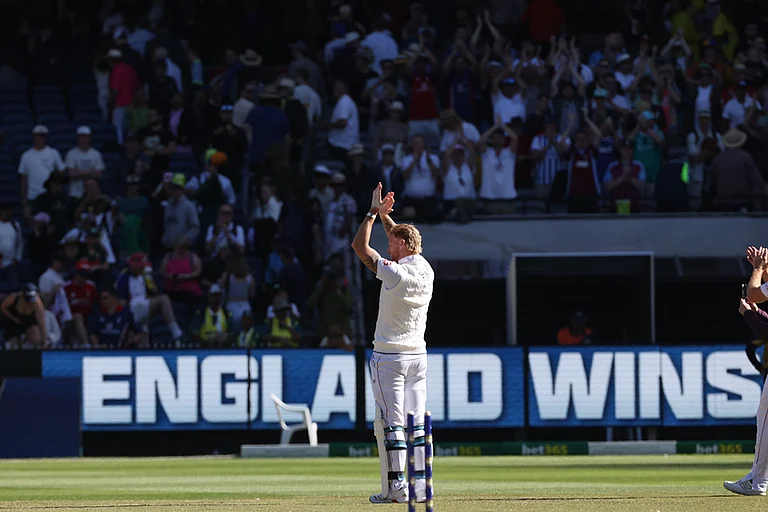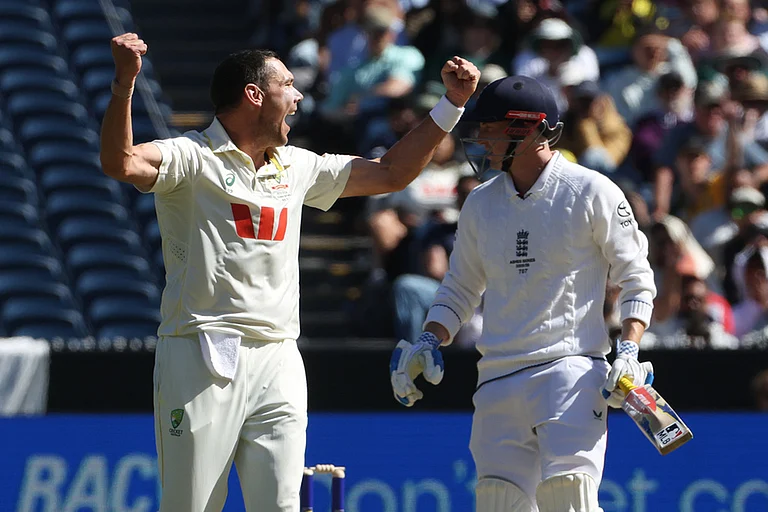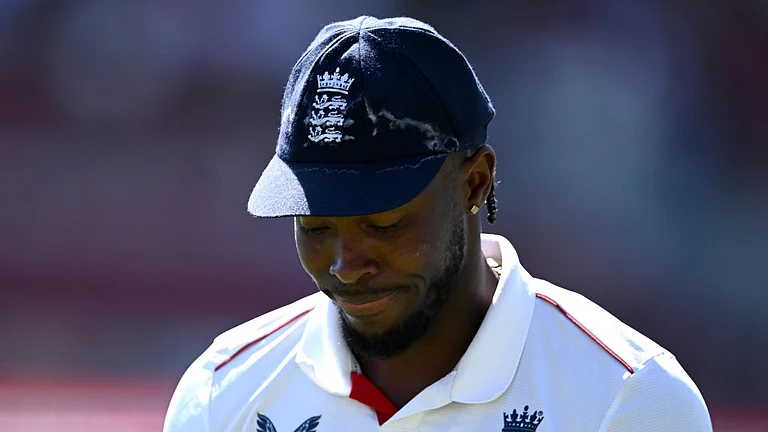Hardly anybody saw it coming. Hours ago, before the start of the fourth day, India were ahead of the game and fancied to chase down whatever target that would come their way, if not bowl England out before that. But strange are the ways of cricket. Ben Stokes and Co made Bazball work, even on a wearing, turning Hyderabad track. And then debutant Tom Hartley weaved his magic with the ball. (Match Blog | Scorecard)
Chasing a tricky target of 231 runs, India were out-spun by the left-arm wizardry of Hartley. The 25-year-old claimed seven wickets as India were bowled out for 202 in the fourth innings, slumping to a 28-run defeat. This was India's first-ever Test loss at home after taking a first-innings lead of more than 100 runs.
Though Hartley's seven-wicket innings haul and nine-wicket match haul was the most eye-catching story in the end, England's victory would not have been possible without an innings of a lifetime by the 26-year-old Ollie Pope. In what India captain Rohit Sharma later called the "best batting" he has seen by an overseas player in Indian conditions, Pope exhibited boundless grit and application to grind out the Indian bowling and cash in on every opportunity, ending up with a superlative 196-run knock.
ALSO READ: How Ollie Pope Put England Ahead
Pope was nearing the milestone of a rare double century in challenging conditions, but instead of dwelling on that, the right-hander went for the team cause of fetching more runs and perished as the last man in the process.
But his efforts, complemented by Ben Foakes and Hartley lower down the order, took the visitors to a daunting total of 420 in their second essay. It meant that India were left with a challenging fourth-innings target of 231, and it proved 28 runs too many in the end.
India got off to a good start, knocking 42 runs off the target with the opening wicket stand between Rohit and Yashasvi Jaiswal. But things radically changed once Hartley had Yashasvi caught by Pope at short leg.
Hartley tasted blood, and the surface now seemed to appear more treacherous. The ball began to turn a tad bit more and the batters seemed to have gone into a shell.
For once, the defensive approach did not work too well in a Test, as unplayable deliveries kept trickling in to send back befuddled batters.
Hartley soon snared Rohit, Shubman Gill, Axar Patel too as the middle-order came and went in no time. KS Bharat mounted some resistance alongside Ravichandran Ashwin for the eighth wicket, and the duo revived hopes of an unlikely rearguard win. But Hartley had other plans, and dislodged both of them to snuff out the Indian challenge.
With 53 more runs to get and the last pair of Mohammed Siraj and Jasprit Bumrah at the crease, some typical tailender mayhem was witnessed as Siraj went for broke with his big heaves. The duo did compile 25 runs, but eventually it all came to nought.
While the match was seemingly won and lost with bat and ball, it was an inspired moment in the field that arguably gave it a decisive twist. England's talismanic skipper Ben Stokes produced an outstanding pick-up and throw from mid-on to catch Ravindra Jadeja, the most athletic member of the Indian team, short of his ground. This was Jadeja's first-ever run-out dismissal in a Test.
Stokes has been involved in many an iconic moments across formats, including his heroic match-winning Ashes effort at Headingley in 2019. But he chose to call Sunday's win against India in India "the greatest triumph since I have captained", underlining the enormity of the achievement and what it means for the English team.
As for India, it is time to go back to the drawing board and see what went wrong, before they formulate a fresh strategy for the second Test, starting February 2 in Visakhapatnam.


























